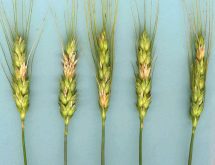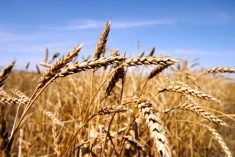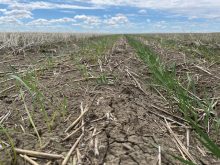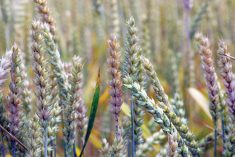“We want Canadian consumers to value this wheat as much as our export customers do.”
– IAN WHITE, PRESIDENT AND CEO OF THE CANADIAN WHEAT BOARD
Television commercials and other promotional messages will soon be telling Canadian consumers pasta is made from Prairiegrown durum wheat.
They’re part of a national campaign launched last week between the Canadian Wheat Board and Canadian pasta manufacturer Primo Foods, promoting the firm’s new GrainWise line of whole-grain pasta. At the same time, they’ll be reminding consumers Canadian farmers grow the durum wheat it contains.
Read Also

June’s fast-moving grain markets
Summing up the grain markets: June 2025 was an interesting month for canola prices and geopolitics stole the spotlight from grain market specifics
Officials with Primo Foods, a leading pasta manufacturer in Canada, were in Winnipeg last week at the Canadian International Grain Institute to launch the campaign alongside officials with the Canadian Wheat Board.
This is a co-branding promotion that includes a focus on Canadian wheat and the farmers who grow it, said CWB president and CEO Ian White.
“Our goal is to raise the profile of durum wheat among Canadian consumers,” said White. This is the CWB’s first co-branding effort linked with a pasta product, undertaken because farmers are asking the board to promote their product and leverage their brand.
“You’re probably familiar with the idea that Western Canada is the breadbasket of the world. But we’re here today to tell you it’s the pasta bowl as well. We want more Canadian consumers to be aware of that fact.”
The CWB initially approached Primo Foods, which had already launched its GrainWise line. The product line includes both whole-grain and whole-wheat pasta using 100 per cent Canadian durum.
Primo Foods will pick up the largest part of the tab for the $1 million campaign, with the CWB contributing $200,000. That will buy the television advertising, billboard signs and nationwide in-store sampling included in the campaign. Messaging on Primo’s GrainWise packaging may also be included.
Development of whole-grain pasta products is actually what’s driving growth in the total pasta category right now, said John Porco, chief operating officer for Primo Foods and chair of the Canadian Pasta Manufacturers Association (CPMA). Growth in the traditional white pasta is “not significant,” at around one to two per cent right now, he said. Meanwhile, “healthy” pasta sales are growing in excess of 20 per cent. “It’s driving the total category,” he said.
Health professionals now advise consumers to eat more whole-grain foods because of the extra nutrients they contain, and the growing body of research showing a link between eating more whole grains and lowered risk of chronic disease, said registered dietitian and president of Ontario-based Nutridata Consulting Laura Pasut. The revised national food guide now also emphasizes the value of whole grains.
Per capita flour consumption has been rising in North America since it hit a 10-year low in 2004, largely due to the low-carbohydrate diets.
However, the same can’t be said for awareness among Canadians as to who grows the grain to produce it. An industry survey of 1,000 Canadians done in March showed nearly half (47 per cent) were unaware that most pasta and bread in Canada is made with Canadian wheat. Yet 89 per cent also ranked use of Canadian wheat as important.
Another survey conducted last year for the Canadian Federation of Agriculture also showed Canadians ranked identifiably Canadian product highly. Ninety-five per cent said they’d choose Canadian products over imports if it supported the viability of family farms.
The co-branding partnership between the wheat board and Primo Foods was announced on the eve of World Pasta Day, which is held every October 25. World Pasta Day has a high profile elsewhere in the world, where product makers use the event to tell consumers about the high quality of Canadiangrown durum wheat.
“There are 10,000 Prairie durum farmers who dominate the world market, growing more high-quality durum wheat than anywhere on earth,” said White. “We want Canadian consumers to value this wheat as much as our export customers do.”



















